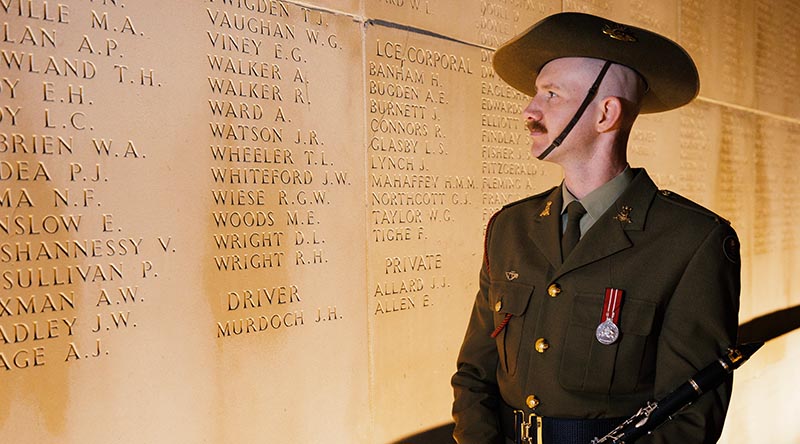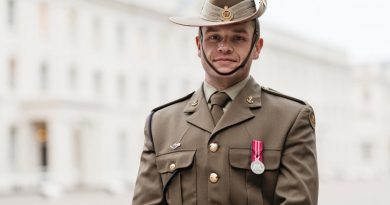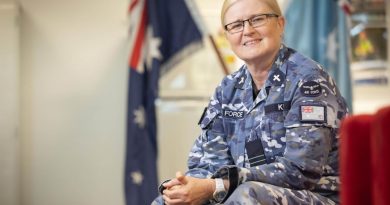Musician remembers lost relative in France

Musician Scott Collinson was moved to be playing in the Australian Army Band at a Dawn Service in France this Anzac Day, just metres from where his great-great-uncle’s name is engraved on a memorial wall.
CAPTION: Musician Scott Collinson, from the Australian Army Band, stands beside the name of his relative, Private Alexander Walker, before the Anzac Day Dawn Service at the Australian National Memorial in Villers-Bretonneux, France. Photo by Sergeant Oliver Carter.
The Australian National Memorial at Villers-Bretonneux honours nearly 11,000 Australian soldiers who fought in France and Belgium, but who have no known grave.
Musician Collinson’s great-great-uncle Alexander Walker was one of those who never made it home.
From Wembley, Western Australia, Musician Collinson said Alexander enlisted in July 1915, just a few years after emigrating from Ireland.
“He lied about his age. We assume it was because he thought he might be too old at 31 to be sent overseas,” Musician Collinson said.
“He was killed in action at the Battle of Pozières on 6 August 1916, just a year later – the same age as I am now.
“Alexander was the third of 10 children. He was a farmer in Ireland and a timber worker in Balingup in the south-west of WA before he enlisted.
“By some weird twist of fate, his younger brother David ended up on the same battlefield one week after his brother was killed.”
David survived the war, though was wounded on two occasions – shot in the ankle in May 1917 and shot in the face, knee and hand in August 1918.
He was discharged as medically unfit in May 1919 and returned home.
Musician Collinson reflected on his role as a clarinet player and musician.
“My role is community engagement and ceremonial duties and it can be easy to lose sight of what these memorial events mean,” he said.
“Being here is a really good reminder of the significance of these events and why we do what we do in the Army band.
“It’s really special to be able to perform just a few metres away from where my great-great-uncle’s name is on the wall, knowing that the reason I’m here is to commemorate his service and sacrifice among countless others.”
.
.

.
.





